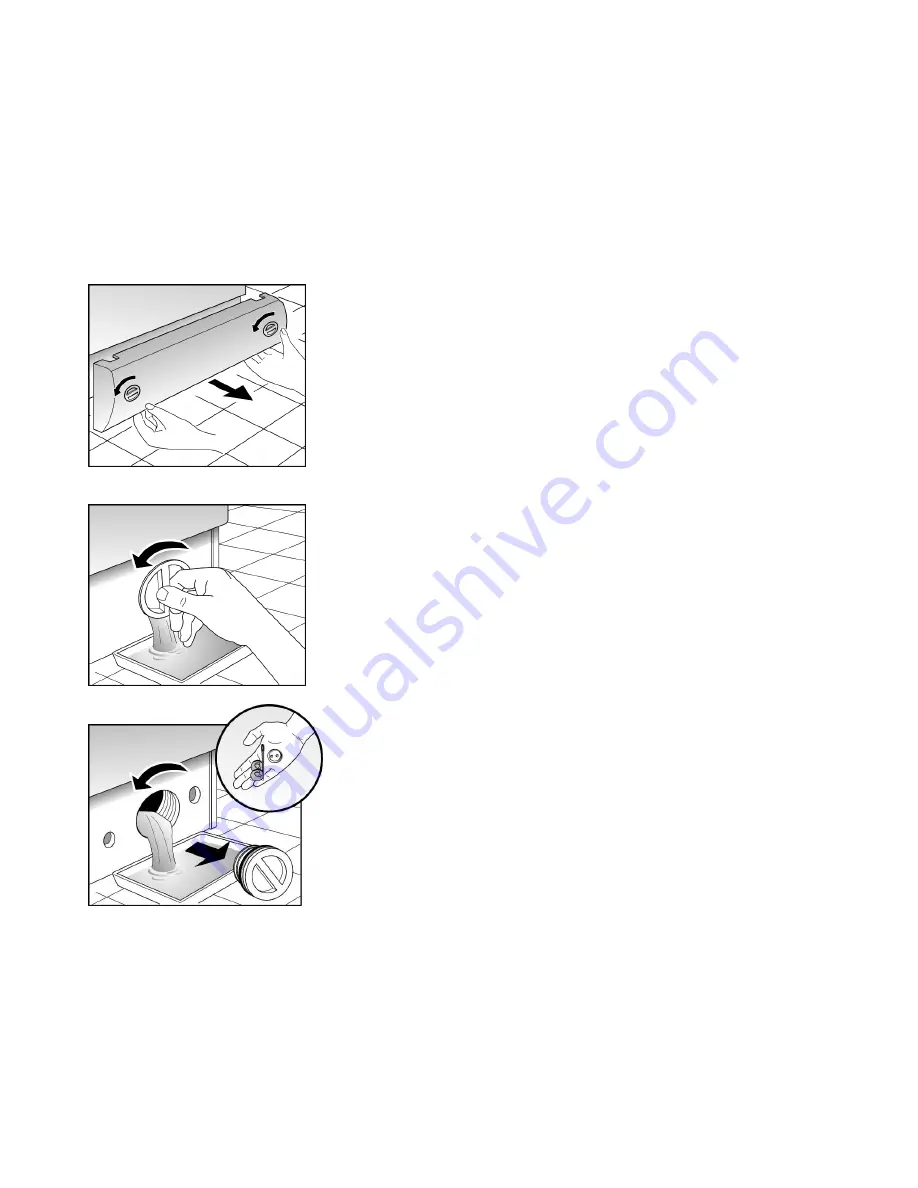
19
en
Rust stains should be cleaned using chlorine-free detergents
(look at the list of substances contained in the product on the
packaging.) Never use
wire wool.
It is recommended that the condition of the hose be checked
every 5 years to prevent the risk of damage caused by leaks or
flooding.
Cleaning is necessary:
m
If the pump is blocked by foreign material (for example
buttons, fasteners, clips, etc.) or if used water is not drained.
m
After washing fluffy items.
All water must be removed from inside the appliance before
cleaning the pump. As much as 20 litres / 4.4 gal of water may
remain if the pump is obstructed.
Procedure
1. Remove the base board from the front of the washing
machine, turning the plastic screw heads using a coin.
!
Risk of burning.
Allow the used water to cool down
2. Place a shallow container under the drainage pump cover
(outlet filter). Loosen the cover without removing it completely
to allow the water to empty gradually. Close the drainage
pump cover when the container is full. Repeat the operation
until all the water has been emptied. Use a suitable container
to remove any remaining water which may spill on the floor.
3. Loosen the drainage pump cover completely.
4. Remove any foreign material or fluff which may have
collected there. Wipe the inside of the pump. The blades
must move freely.
5. Loosen and fit the drainage pump cover in place. Ensure that
it is correctly closed.
6. Fit the base board in place.
7. Pour 2 litres / 3.5 pt of water into the detergent drawer and
start the «Pumping (emptied)
b
» additional programme.
This will prevent the detergent from being flushed out before
being used in the next wash.
Cleaning the drum
Water inlet hose
Cleaning the water
pump






































